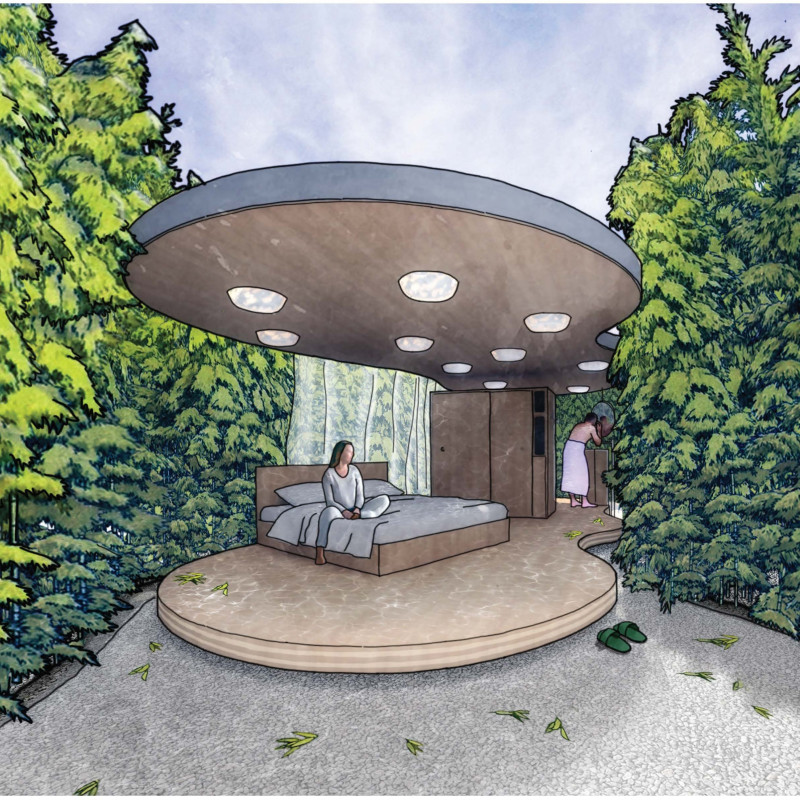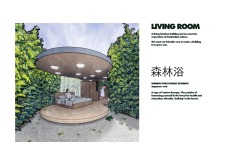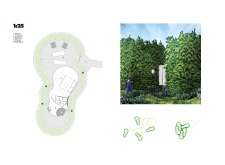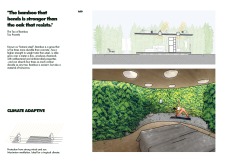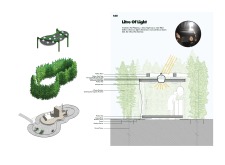5 key facts about this project
The design focuses on sustainability through the extensive use of bamboo, integrating with the natural landscape of Cambodia. It serves multiple functions, including a living area, courtyard, bedroom, storage, and bathroom. The concept centers on living architecture, suggesting that buildings should be grown rather than built. This approach aims to minimize environmental impact and create a stronger bond between the inhabitants and their surroundings.
Conceptual Framework
Shinrin-Yoku, or "forest bathing," is an essential part of the design philosophy. This Japanese practice encourages spending time in nature for health benefits and relaxation. It influences how the space is arranged, allowing for smooth transitions between indoor and outdoor areas. This connection with nature is vital, as it enhances the overall experience for those using the space.
Materiality and Sustainability
Bamboo is the main material highlighted in the project. Referred to as "botanic steel," it showcases impressive strength and durability. Bamboo is five times stronger than concrete and has a greater strength-to-weight ratio than steel. It grows quickly, sometimes over a meter per day, and naturally resists harmful bacteria. Additionally, bamboo absorbs more carbon dioxide than traditional trees, making it a sustainable choice for construction.
Climate Responsiveness
Attention to climate is a significant aspect of the design. It includes features to protect against strong winds and direct sunlight while promoting natural airflow. Such measures are critical in a tropical environment, where comfort and energy efficiency are essential. The design effectively responds to the local climate, using natural elements to create a resilient living space.
Materials used in the project add both function and visual interest. Components like PlyBoo Beam, PlyBoo Flitch Plate, Terrarium Bottle, and Water Proof Membrane contribute to the overall technical framework. Together, these elements form a cohesive structure that combines modern design with ecological responsibility, creating an environment that resonates with its natural setting.


